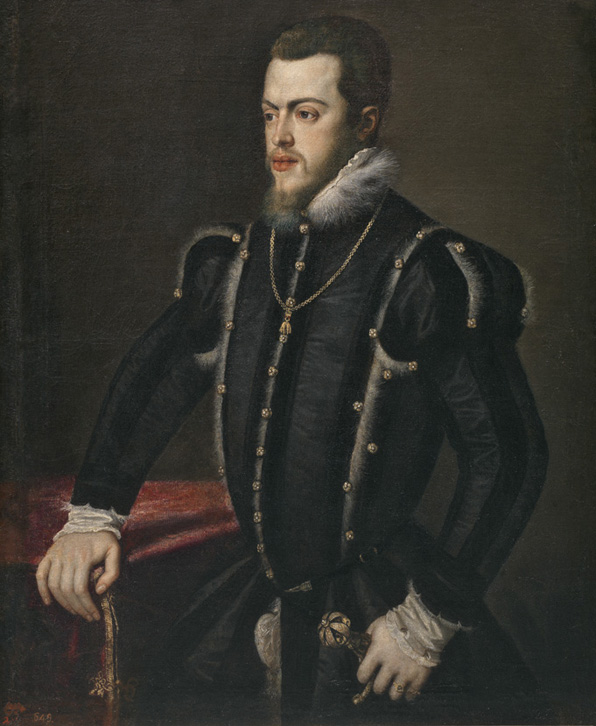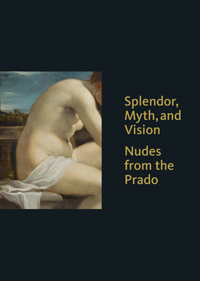
June 11–October 10, 2016
the Spanish Kings as patrons
Diego Velázquez
Spanish, 1599–1660
Philip IV, c. 1653–55
Oil on canvas
27 1/4 x 22 1/4 in. (69.3 x 56.5 cm)
Museo Nacional del Prado, Madrid
P01185
Titian (Tiziano Vecelli)
Italian (Venetian), c. 1488–1576
Philip II, 1549–50
Oil on canvas
40 1/2 x 32 1/4 in. (103 x 82 cm)
Museo Nacional del Prado, Madrid
P00452
Spanish Habsburg monarchs assembled one of the finest art collections in the world. By the end of the seventeenth century, the Spanish Royal Collections had swelled to over 5,000 paintings, a number hardly rivaled in the rest of Europe. These splendid collections extended beyond the walls of the Alcázar Palace to other royal residences within and outside Madrid. Both Philip II and Philip IV favored the work of Italian and Flemish artists, particularly cycles of sensual mythological subjects, biblical stories, and landscapes that feature nude figures. In contrast, Philip III (reigned 1598–1621) kept many of his father’s paintings sequestered in the royal palaces where even he would not have to see them. This moral disapproval of paintings of the nude continued during the Bourbon dynasty, when Kings Charles III (reigned 1759–88) and Charles IV (reigned 1788–1808) attempted to have paintings of nudes in the royal collections burned. The decision to move these paintings to various salas reservadas in palaces around Madrid ultimately saved them from destruction.
A fully illustrated catalogue accompanies the exhibition, with an essay by Javier Portús on the Spanish royal taste in collecting and the role of the sala reservada, as well as a contemporary response to understanding the nude in Renaissance and Baroque painting by Jill Burke. The catalogue is published by the Clark and distributed by Yale University Press. Call the Museum Store at 413 458 0520 to order.




